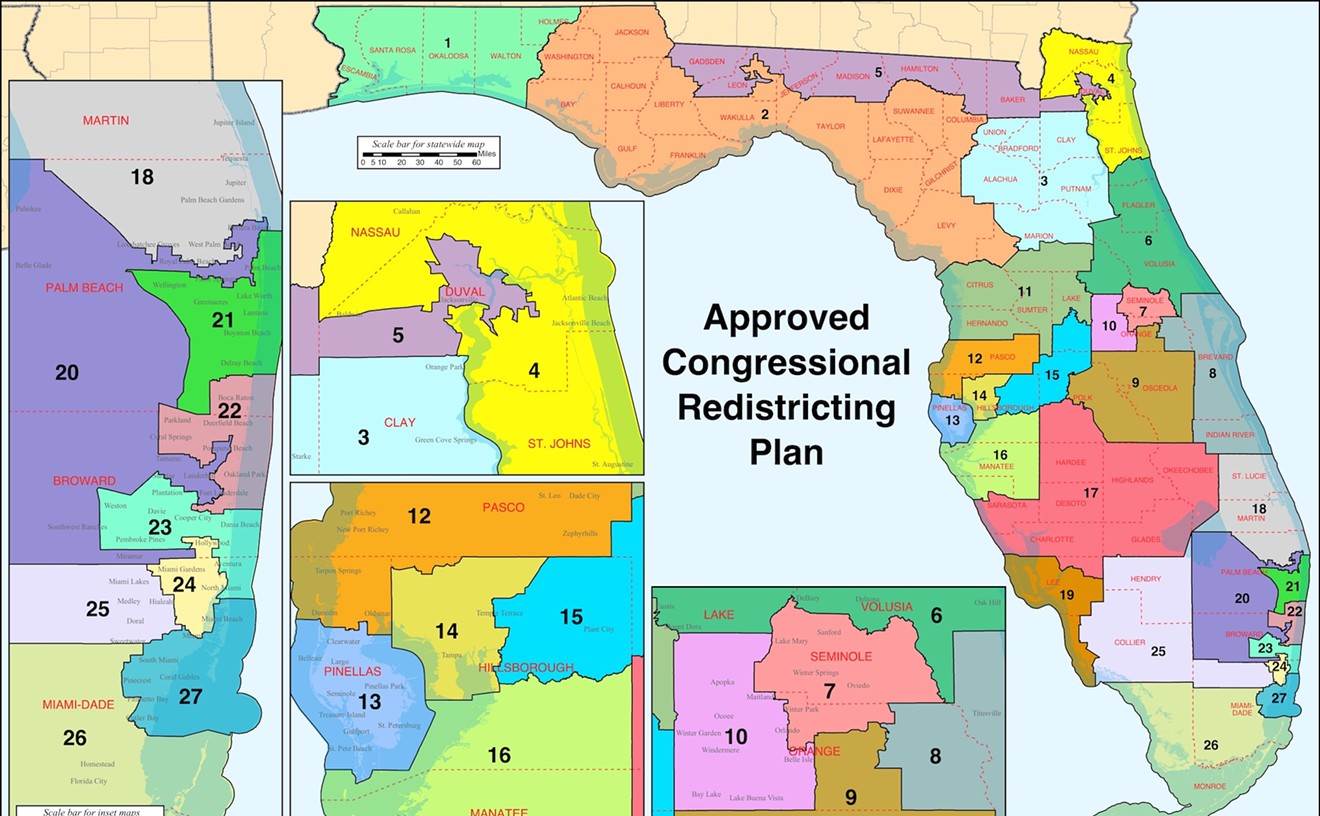Let the squabbling begin.
Last Thursday’s delayed release of 2020 census data kicked off the once-a-decade redistricting process, setting the stage for Florida lawmakers to begin configuring congressional and legislative districts in advance of next year’s elections.
But politics will play as big a role as population when the Republican-controlled Legislature starts drawing maps that could help the GOP maintain a stranglehold on the state House and Senate as well as Florida’s congressional delegation for at least 10 more years.
It’s the second time lawmakers will craft new districts following passage of the Fair Districts constitutional amendments by Florida voters in 2010. The amendments were designed to prohibit partisan gerrymandering or maps that favor incumbent elected officials.
Thinking of gerrymandering my yard to include my neighbor’s pool
— connectpoliticditto. (@cpoliticditto) August 12, 2021
The constitutional amendments resulted in legal battles over proposed maps following the last census, with lawmakers ultimately forced to redraw congressional and state Senate districts.
But the Sunshine State has undergone significant shifts on numerous fronts since those maps were finalized.
In addition to changes in demographics, the Florida Supreme Court has become more conservative. Two justices who dissented in decisions that overturned the Legislature’s proposed districts during the last go-around are now in the court’s majority, with one of them — Charles Canady — holding the chief justice’s gavel.
Now it’s up to Republican lawmakers overseeing the work to determine how far they believe the courts will let them go in crafting new lines that will include an extra congressional district.
In advance of the census data release, a coalition of groups held a webinar last Wednesday to discuss efforts to ensure that the once-a-decade reapportionment remains a “transparent process” that follows the Fair Districts guidelines.
As a lesson learned from the process a decade ago, Senate President Wilton Simpson, R-Trilby, and House Speaker Chris Sprowls, R-Palm Harbor, separately advised lawmakers last week to refrain from discussing map proposals, particularly with people who hope to gain from the changes.
“The House continues to strongly recommend that planned or unplanned conversations about redistricting not take place outside of the committee process with individuals who have a vested interest in the outcomes of the redistricting process,” Sprowls wrote in a memo.
The House and Senate plan to have a joint website to provide detailed information to the public. Also, input will be gathered during committee meetings held in advance of the 2022 legislative session. Lawmakers are expected to approve final maps during the session, which will start in January.
A decade ago, 26 public hearings were held throughout the state during the summer leading up to the districts being redrawn. But lawmakers had more time in 2011, because COVID-19 delayed the 2020 census count.
“Although the census bureau’s delay in releasing the redistricting data is unique to this cycle, we are still well within our constitutionally mandated time frame of redrawing district maps — during the 2022 regular session,” House Redistricting Chairman Tom Leek, R-Ormond Beach, said in a statement. “We are ready to get to work.”
news@orlandoweekly.com

